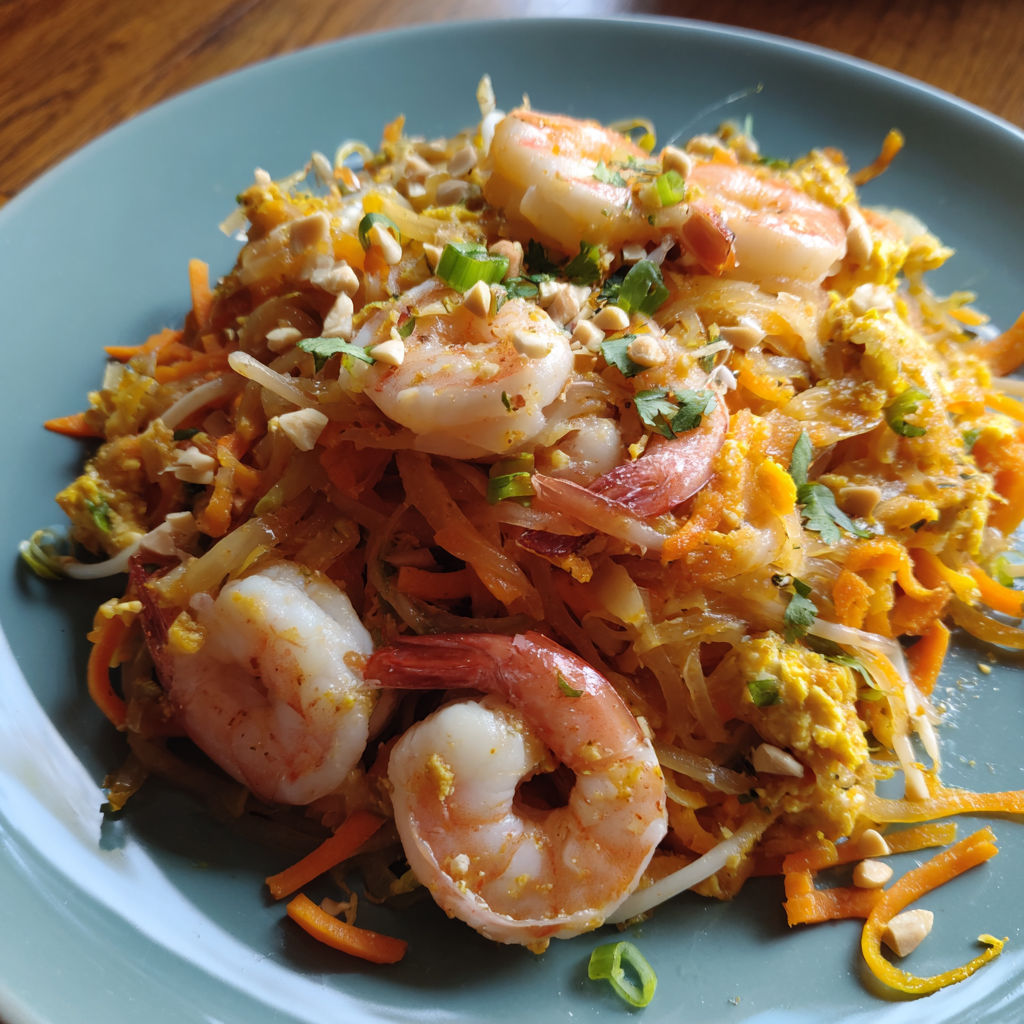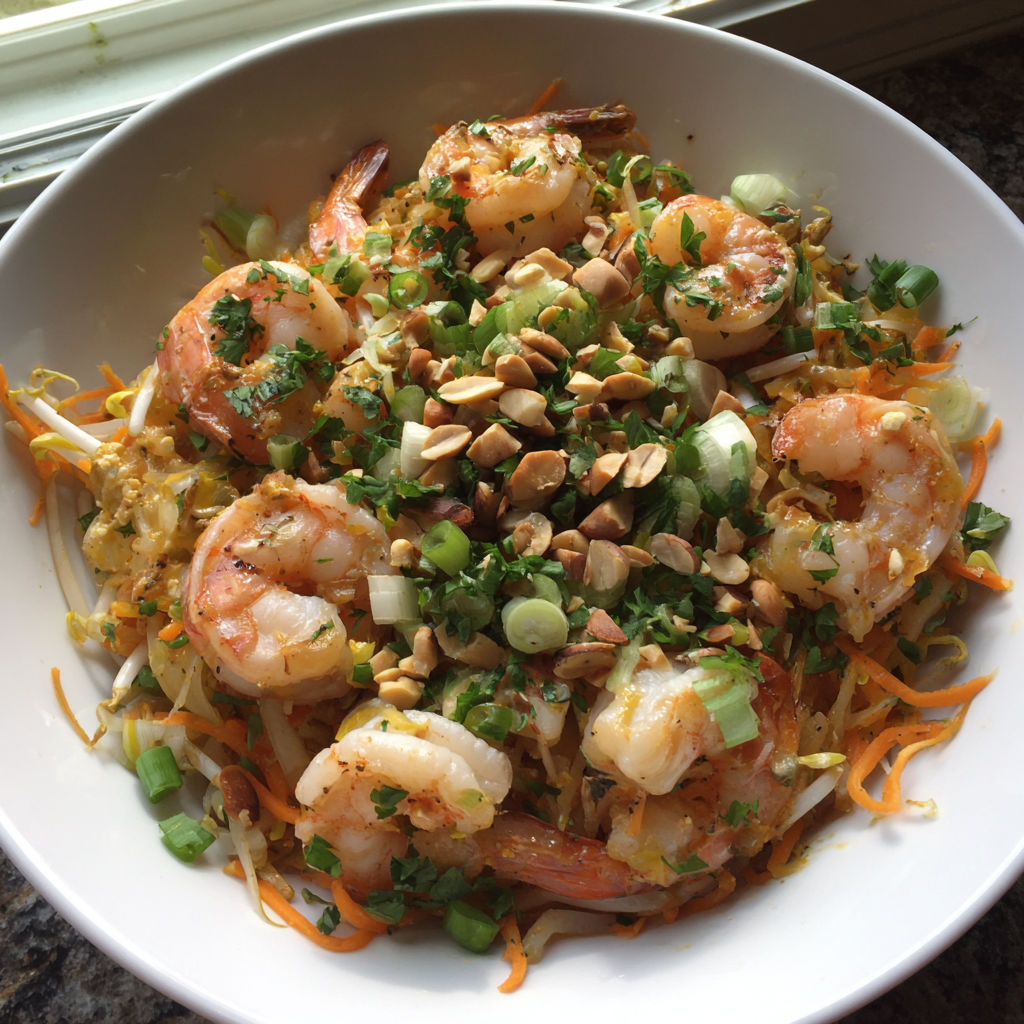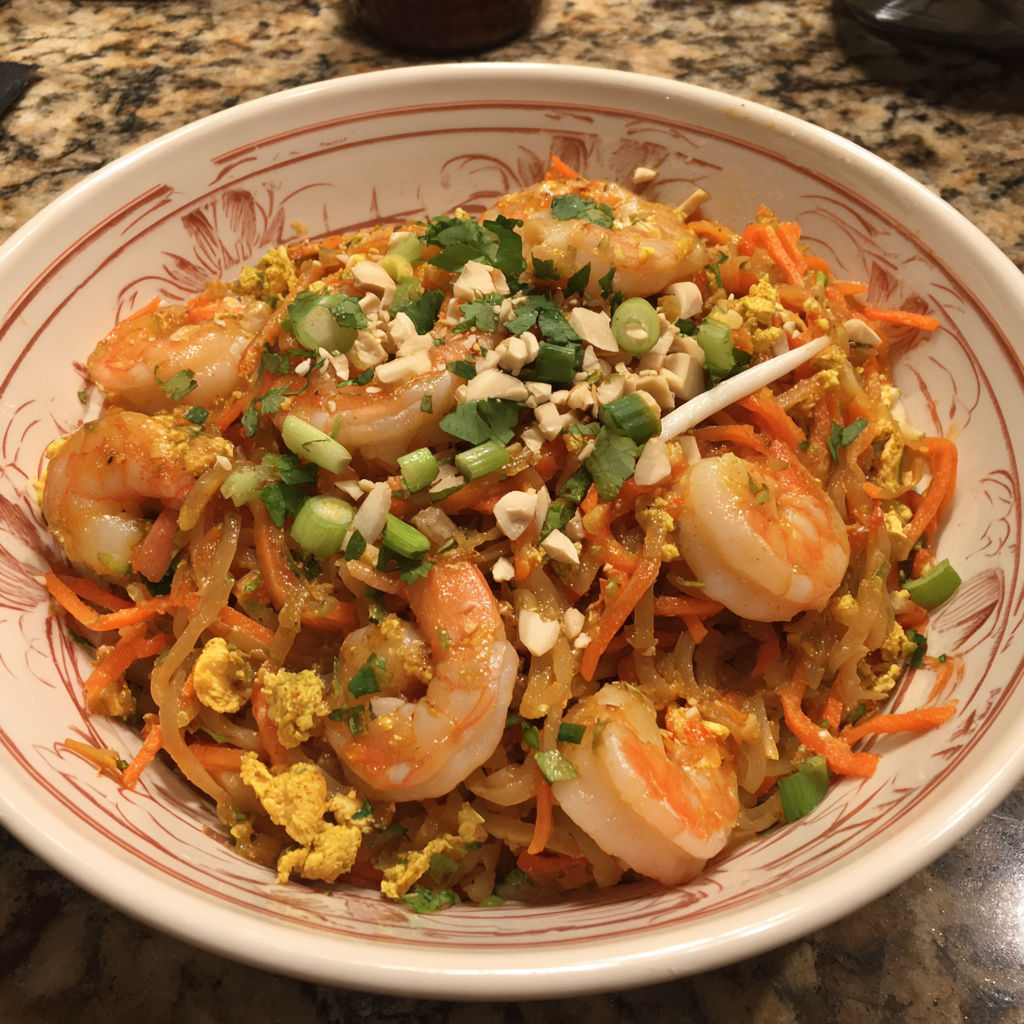 Pin
Pin
This Paleo Shrimp Pad Thai is my go—to weeknight dinner when I am craving something fresh and full of flavor without going heavy on carbs. Swapping in sweet spiralized carrots for traditional noodles gives this dish a vibrant crunch while keeping it gluten free and Paleo friendly—perfect for a lively dinner that does not weigh you down.
I first tried making this after a trip to Bangkok inspired my love of Pad Thai. Now it is a staple for quick, feel good dinners and is always a huge hit at my table.
Gather Your Ingredients
- Almonds: They add savory crunch and extra protein look for raw unsalted almonds for best flavor
- Coconut oil: Lends a light tropical flavor and makes this dish fully dairy free pick unrefined for stronger aroma
- Raw peeled shrimp: Choose large wild caught shrimp for firm sweet bites
- Green Giant Veggie Spirals Carrot or spiralized carrots: These make a vegetable noodle base that is fresh and crisp
- Onion: Brings sweetness and depth slice thin for quick cooking
- Eggs: Help bind everything together and add richness choose pasture raised for best taste
- Green onions: Add a sharp bite and pop of color
- Cilantro: Refreshes each bite with a zesty herbaceous note
- Mung bean sprouts: Bring a light crisp texture and classic Pad Thai vibe
- Lime juice: Brightens the whole dish fresh limes always taste best
- Fish sauce: The secret to umami depth look for quality brands without additives
- Honey: Adds subtle sweetness skip for WholeThirty use a squirt of coconut sugar if you like
- Coconut aminos: Balances flavors and replaces traditional soy sauce for Paleo cooking
- Garlic: Infuses aromatic warmth mince very fine or grate for bigger punch
- Birds eye chili peppers: Give real Thai heat use or skip depending on your spice preference
How to Make It
- Make the Sauce:
- Whisk together lime juice fish sauce honey coconut aminos and minced garlic in a small bowl until smoothly combined. If using chilies stir them in now. Set aside so the flavors meld.
- Toast the Almonds:
- Place whole almonds in a large dry skillet over medium low heat. Stir them gently for about five minutes until they are golden and fragrant. Transfer to a cutting board chop roughly and save for garnish.
- Sauté the Shrimp and Onions:
- Warm a tablespoon of coconut oil in the same skillet on medium high. Add shrimp and sliced onions. Stir fry for about three minutes until shrimp turn pink and opaque and onions become translucent. Scoop out and hold aside.
- Cook the Carrot Noodles:
- Drizzle the other tablespoon of coconut oil into the pan. Add the spiralized carrots. Cover the pan and let the carrots steam while stirring occasionally for about eight minutes. This softens while keeping some bite.
- Add Eggs and Green Onions:
- Push the carrots to one side of the skillet. Pour in the whisked eggs and scatter in green onion pieces. Cook gently stirring the eggs just enough until they are almost fully set about a minute.
- Combine with Shrimp and Sauce:
- Return the cooked shrimp and onions back into the skillet. Toss in the mung bean sprouts and pour in all of your Pad Thai sauce. Stir quickly for about thirty seconds until everything is steaming and well coated.
- Finish and Garnish:
- Remove the skillet from heat. Sprinkle over the toasted chopped almonds and a generous handful of cilantro leaves. Toss once more to mix and serve hot right from the pan.

My favorite thing here is the juicy shrimp which soak in all those citrusy tangy flavors. Once during a family dinner the entire skillet disappeared so fast we only had slivers of almond left on the serving plate that is always a sign of a new go—to favorite.
Flavor Boosters
Try marinating the shrimp in lime zest and coconut aminos for a punchy flavor or sprinkle on extra toasted almonds for more depth. Add freshly chopped birds eye chili for classic Thai heat or finish with extra cilantro and a squeeze of fresh lime juice for brightness.
Serving Suggestions
Serve in deep bowls with extra lime wedges at the side. Top with more fresh cilantro mung bean sprouts or a sprinkle of crushed chili if you like it spicy. Pair with a cucumber salad for a light meal and keep garnishes on the side so everyone can personalize.
Creative Twists
Swap spiralized carrots for zucchini or butternut squash based on seasons. Try chicken breast or tofu in place of shrimp or use sunflower seeds for a nut free version. Thai basil or mint bring a new herbal twist in the summer.

This is the dish that makes weeknights brighter and leftovers just as exciting the next day. Every flavor pops and you’ll love how quick and colorful it is at the table.
Common Questions About This Recipe
- → What can I use if I don't have spiralized carrots?
You can spiralize your own carrots or substitute with spiralized zucchini or sweet potato for a similar texture and taste.
- → Is there a substitute for fish sauce?
For a similar savory depth, try coconut aminos, soy sauce (if not strictly Paleo), or a combination with lime juice for umami.
- → Can I make this dish less spicy?
Absolutely. Omit the bird's eye chili peppers or use milder peppers to control the spice level according to your preference.
- → What protein alternatives work in this dish?
Chicken, tofu, or even thinly sliced beef can replace shrimp. Adjust cooking time as needed to ensure proper doneness.
- → How do I keep the carrot spirals from getting soggy?
Cook the carrot spirals uncovered and avoid overcooking. Stir-frying for a few minutes retains their texture and bite.
